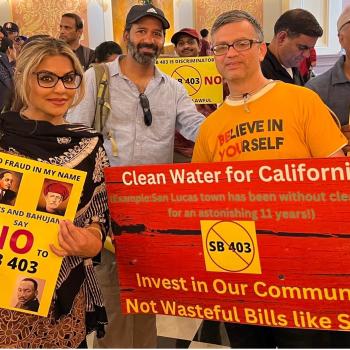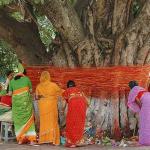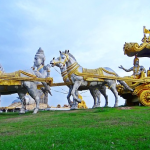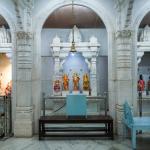If you want to read the English book online, head to Chapter 1. To download PDFs, use the links below. All books are available for downloads as pdfs, and are free. However, some of these take quite an effort to scan and create as ebooks, so please consider making a small donation. You can enter the amount once you click on the books below.
PDF Downloads – English, Hindi, Sanskrit, Telugu, Malayalam
Sanskrit (with Hindi commentary)
Print versions of the book are also available from Flipkart in India and Amazon in the US.
Flipkart has: English and Hindi.
Amazon has: only English
You may also be interested in Chanakya’s other book, the Arthashastra in English and Sanskrit.
Be sure to check out the public domain books page for more puranas, epics and other interesting books to download.
More Free Stuff
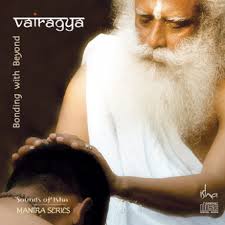 Vairagya is a collection of sacred chants that include Nirvana Shatakam, Aum Namah Shivaya and Guru Paduka Stotram.
Vairagya is a collection of sacred chants that include Nirvana Shatakam, Aum Namah Shivaya and Guru Paduka Stotram.
 “Shiva – Ultimate Outlaw” is in the words of yogi and mystic Sadhguru, and gives us a dynamic and unique look at the many aspects of Lord Shiva, that are not found elsewhere.
“Shiva – Ultimate Outlaw” is in the words of yogi and mystic Sadhguru, and gives us a dynamic and unique look at the many aspects of Lord Shiva, that are not found elsewhere.
 The Lord Shiva app is a one-stop guide to Lord Shiva. Get chants, stories, temples, wallpapers and more.
The Lord Shiva app is a one-stop guide to Lord Shiva. Get chants, stories, temples, wallpapers and more.
Download Android App
 The Spiritual Quote of the Day App includes quotes from Mahatma Gandhi, Swami Vivekananda, Gautama Buddha and many more great beings.
The Spiritual Quote of the Day App includes quotes from Mahatma Gandhi, Swami Vivekananda, Gautama Buddha and many more great beings.Download Android App
The Authenticity of Chanakya Niti
Certain Western scholars often bring up the contradictions between Megasthenes works on the Mauryan Empire under Chandragupta, and the works of the Chanakya Niti and Arthashastra as written by Chanakya. Sometimes, this argument is used to prove that Chanakya did not in fact exist, and that Chanakya was in fact a real individual. He was named Vishnugupta, and belonged to the Kutala clan and was thus also called Kautilya. His name Chanakya probably derives from his father’s name, Chanaka. Here we will look at how these differences are not really differences. An endeavor is made here to examine briefly the differences and the similarities between Megasthenes’ Fragments and the Kautilya and see how the differences so called are really minor and mostly imaginative. A comparison is instituted here. In this particular the plan followed is to a large extent that of Otto Stein in his Megasthenes and Kautilya where he has exhaustively dealt with this question.
The Chanakya Niti & Megasthenes’ Indika – Comparison
1. Roads
Among the public institutions examined by Stein are first the roads. According to Megasthenes, “The length from west to east as far as Palibothra can be stated with greater certainty, for the royal road is measured by schoni, and is in length 10,000 stadia.” The Greek expression in the Indika means the Indian raja marga or royal road. And it is argued that in the Kautilya the road which goes from west to east is not the royal road but the high road which is a trade route. It may be that Kautilya was aware of it and he had no occasion to mention it.
2. Milestones
Secondly, the following are the remarks of Megasthenes on the milestones: “They (Agoranomen) construct roads, and at every ten stadia set up a pillar to show the by-roads and distances.” In the opinion of Schwanbeck, the schoemis which with Eratosthenes coincides with the Indian measurement of distance, yojana, is a measure of 40 stadia of four krosas. While we do not meet with the term krosa as an official measurement in the Arthashastra, the term is not unknown to Ashokan inscriptions. According to the seventh Pillar Edict of Ashoka at intervals of eight kos the roads were marked by trees and fountains of water. Mile-stones might have been used or might not have been used. It may be as Stein suggests that Megasthenes has imported the Persian or Egyptian idea into India. If this were established it would not detract the value of the Arthashastra which portrays a state of affairs actually obtaining in the land. It, on the other hand, tends to reduce the intrinsic value of Megasthenes’ writings on India.
3 Measurement of land
With regard to the measurement of land, Megasthenes has the following observation:—“Some (Officials) superintend the rivers, (and) measure the land as is done in Egypt.” It is argued that whereas the Arthashastra mentions measurements of landed property of the village perhaps for purposes of taxation, Megasthenes seems to refer to a general measurement of lands in vogue. Scholars like Law and Mookerjee have accepted the theory that the measurement of land was in practice in Ancient India. It is true that the measurement in the Arthashastra refers only to the village and its borders, and at the same time one cannot agree with Prof. Stein that Megasthenes refers to a general measurement of lands. That this is only a supposition of Dr. Stein, and that Megasthenes must have meant only the village measurement is evident from Strabo whom the learned scholar himself has quoted. “Strabo speaks about the land measurement of Egypt in order to fix the limits of the property which were damaged by the floods of the Nile.” Fixing the borders of the property must necessarily refer to the landed property of every village and not to a general land measurement though Strabo has not mentioned the particular expression ‘village’. One of the functions of officials like the Gopa and the Sthanika in the Kautilya is the survey and the measurement of lands.
The Chanakya Niti on Farming
4. Irrigation canals
Speaking on irrigation, Megasthenes observes that the officials supervise waterways (sluices) which can be closed, and out of which water is let out slowly so that all may have access to it. Prof. Stein would not accept the rendering by McCrindle of the Greek expression in the Indika as sluices. He interprets it as any waterway that could be shut up. We can accept Stein’s interpretation as it well fits in with the use of the term in the Arthashastra — setubandhas. The term is also used in another sense, in connection by iron railings. With this we are not concerned now. Setubandha is a construction of a dam or bridge to shut out or let in water. This is the generally accepted interpretation and no purpose is served by twisting it and interpreting it in other ways. It has been accepted on all hands that one of the means of India’s irrigation was by means of canals and channels and this finds an unmistakable expression in the extant Arthashastra.
5. The harvest seasons
Dr. Stein next examines the mention of the two crops in the course of the year by Megasthenes who speaks also of the fertility of the soil and a double rainfall, one in the winter season and the other in summer. Wheat, rice, sesame and millet are mentioned. Megasthenes who had heard of the agricultural industry from report — because there is no statement that he went into the country-parts outside the Capital -— could not furnish more details than these. Kautilya mentions the crops of the rainy season and crops which could be raised in other seasons also. The fertility of the soil and the raising of two crops, summer and winter, can be easily proved from the Arthashastra and especially the chapter entitled sitadhyaksa.
6. Fortress at Pataliputra
On the fortification of Pataliputra says Otto Stein:— “The fragments of Megasthenes refer to Pataliputra and its fortification. In the Arthashastra however there is no mention of Pataliputra.” Megasthenes also speaks of several cities situated on the banks of rivers or on the sea-coast built of wood instead of brick and of cities on other commanding situations built of brick and mud. Strabo on the other hand mentions wooden buildings all round, which is not a fact. Rhys Davids speaks of fortifications in India built of stone walls in the 6th century B.C. Kautilya refers unmistakably to walls of stone. Therefore Strabo could not be credited with full knowledge of facts about India. There were certainly wooden portions in the buildings. This is true even of houses built today. X. N. Law has shown that houses of wood were indeed common in the fourth century B.C. side by side with stone.
An attempt has been made by Stein to compare the description of Pataliputra with that found in the Chanakya Niti. It may be that Kautilya describes the fortress, its construction and plan from actual conditions, and not as mere theory. On that account it does not stand to reason that Kautilya has purely drawn his materials for the construction of a fortress from Pataliputra. It may be that Pataliputra served him as the basis for constructing his theory of a fortress. But we cannot expect Kautilya who writes a general treatise on statecraft to follow the details and measurements of Pataliputra. Though the Arthashastra was for the time being intended for Chandragupta, it was a textbook on Polity for all time, and for all kings, and for all places. Therefore Kautilya could not have prescribed only one standard the model of the fortress at Pataliputra. On the other hand he mentions different kinds of fortresses such as nadidurga, vanadurga with respective measurements in details. Some may have four gates and some twelve gates. Some may have one trench around and others three trenches. It all depends on the environs and eminence where such fortress is erected. For the construction of a fortress is purely dependent on topographical and geographical circumstances. By sheer accident, some measurements or details of Megasthenes may coincide with the Chanakya Niti description, as for example, Pataliputra in the form of a square, the wall of Arrian to the parikrama of the Chanakya Niti, etc. On this account we cannot proceed to compare the two because Kautilya is certainly not describing the fort at Pataliputra but is describing how and in what manner a fort could be erected at such and such a place.
Connected with this is the theory that as Kautilya does not mention Pataliputra he could not have been the Minister of Chandragupta. It is very probable that there was no occasion for Kautilya to mention his Capital city by this name. It may be repeated again that Kautilya’s mission was not to sketch Chandragupta’s administration, though Chandragupta seems to have based his administration on the model suggested. His purpose was to write a scientific treatise on administration which his King Chandragupta and his successors as well might use with profit and advantage to themselves. In such a treatise there would certainly be no occasion for mentioning the city of Pataliputra, and the mere omission of this fact cannot be seriously advanced as an argument for or against establishing the authenticity of the work.
7. Houses and property
Megasthenes says that the houses and property of Indians were left generally unguarded. This observation is the outcome of the idealistic tendency of Megasthenes to establish the honesty of Indians. This does not mean that there was no theft of any kind or robbers of any sort. Human nature being what it is, it is impossible to think of a state of affairs at any time and in any clime, where robbery was totally absent and where transparent honesty prevailed. What Megasthenes evidently means is that the administration of the land was under such powerful hands that none dared to commit crime of any sort. Nothing more can be deduced from this statement.
The Chanakya Niti on War Animals
8. On Elephants
Dr. Stein has examined at length the passages of the Chanakya Niti on elephants with the relevant statements of the Indika under different headings: (a) places where they are caught, (b) their height, (c) age, (d) hunting, (e) stalls, (f) size, (g) feeding, (h) training, (f)diseases and their remedy. It is gratifying to note that under almost all these items he finds more points of resemblance between the Greek account and the Arthashastra. The minor differences under this section are with regard to age. According to Kautilya elephants which are 40 years old are the largest, those of 30 medium size, and those of 5 and 20 of the lowest class. But the Greek accounts refer to elephants aged 200 and 300 years. Common sense tells us that this portion of the account must be an exaggeration, perhaps to glorify the importance of those animals for the state in respect of war, traffic, etc. It is unfortunate that such incorrect statements have found a place in their documents. In regard to particulars about hunting, it is only a question of details which do not legitimately belong to the province of a work on polity.
9. On Horses
The fragments available do not furnish details in respect of the training, feeding, and housing of horses. Dr. Stein remarks: “What Megasthenes has given is hardly worth comparing, nor very much has he left to speak with definiteness.” The statement that no bridles were used for horses is contradicted by himself. In 35 it is said that “the professional trainers break them in by forcing them to gallop round and round in a ring” — a kind of training that is mentioned with certain modifications by Kautilya. In this connection it may be pointed out that the statement of Megasthenes that the elephants and horses were the monopoly of the king and that no private person had the right to enjoy them has been contradicted by other Greek writers. Strabo and Arrian definitely state that these animals were as much private property as that of the state. The Kautallya on the other hand nowhere commits itself to a statement that these animals were the sole property of the king. A perusal of the several connected chapters shows that these animals were used also as private property though preference was certainly given to the king who required their frequent use especially for purposes of war. Thus under these heads there is little or nothing worth comparison and the points of coincidences outweigh those of differences.
10. On metals and mines
Prof. Stein agrees with Jolly when he says that Megasthenes mentions only silver, gold, bronze, iron, and tin, whilst the list of Kautilya includes more metals like copper, lead, vaikarantaku, mercury, and brass, and shows that that period must have been an infant stage of knowledge with regard to metals whilst that of the Kautilya shows a highly developed knowledge in both chemical and technical sciences. Stein concludes thus:— “The enumeration of these metals with details as to shape, colour, and quality, ability to work upon the metals, and finally, the many kinds of officials for almost every branch of the mining industry, overseers and inspectors of mines, of useful metals (lohadhyaksa), of coinage, of salt, of gold, of goldsmith, and legal regulations with regard to private management, all these demonstrate that in this field there is a higher culture than in the Greek reports commencing with Megasthenes. Undoubtedly here we find a more recent epoch.”
Why the Chanakya Niti is Ancient
The above conclusions are untenable for the following reasons:—
(a) The report of Megasthenes does not simply mention only these five metals and does not say that India knows only of these and no other. We shall quote Megasthenes: “And while the soil bears on its surface all kinds of fruits which are known to cultivation, it has also under ground numerous veins of all sorts of metals, for it contains much gold and silver, and copper and iron in no small quantity, and even tin and other metals are employed in making articles of use and ornament, as will be the implements and accoutrements of war.” Thus Megasthenes mentions by name five metals but is careful to speak also of “other metals.” It is a significant phrase. It shows that other metals and their use were well known. Apparently he did not seem called upon to give a complete list of metals known. In fact they were so many that he used the term “other metals” advisedly.
(b) It is also evident from the above passage that these metals were put to different uses, jewellery, arms of war, etc. This means that there were different flourishing industries and the work was done by skilled labourers. It seems that these industries were under the supervision of the state and its officials. Nevertheless private enterprise was not discouraged. Private people could take to these manufactures after obtaining the necessary licence. Even mines were exploited by private people with licences previously obtained. To turn the metals into articles of utility requires naturally a sound knowledge of melting, smelting, moulding, and other chemical and technical processes.
(c) Metallurgy and alchemy are not recent growths in India as the learned German scholar would have it. It has been already shown1, that there were ancient works on metallurgy and alchemy as is evidenced by the Kautilya itself. It is a wrong reading of Indian history, to repeat what has been already said, that Indian culture began with or after Alexandar’s invasion to India. The Buddhist Jatakas, the Ramayana and other ancient works, composed before Alexander invaded India, knew of different arts and crafts connected with metals.
(d) To say that Megasthenes’ account betrays an infant stage of India’s technical sciences is a contradiction in terms. His mention of other metals as well as their different uses show as much an advanced stage as that portrayed in the Arthashastra. We are not able to find any difference between the two versions except the fact that Megasthenes does not mention much by way of workmanship in metals. If we rely on literary tradition, advancement of metal culture has reached a great stage before Kautilya’s time. It continued to keep its level and maintain its prestige with greater glory and success under the Mauryas, because the Mauryas gave the country tranquillity and peace which are so essential for the progress of any business or industry. It may be however surmised that it had become decadent under the Nandas and revived under the Mauryas with greater vigour and fresh enthusiasm. Whatever may be the truth, the fact remains that there is no warrant to call the statement in Megasthenes’ records as infantile and that in the Arthashastra as progressive culture. It is something like the proverb “Give the dog a bad name and hang it”.




